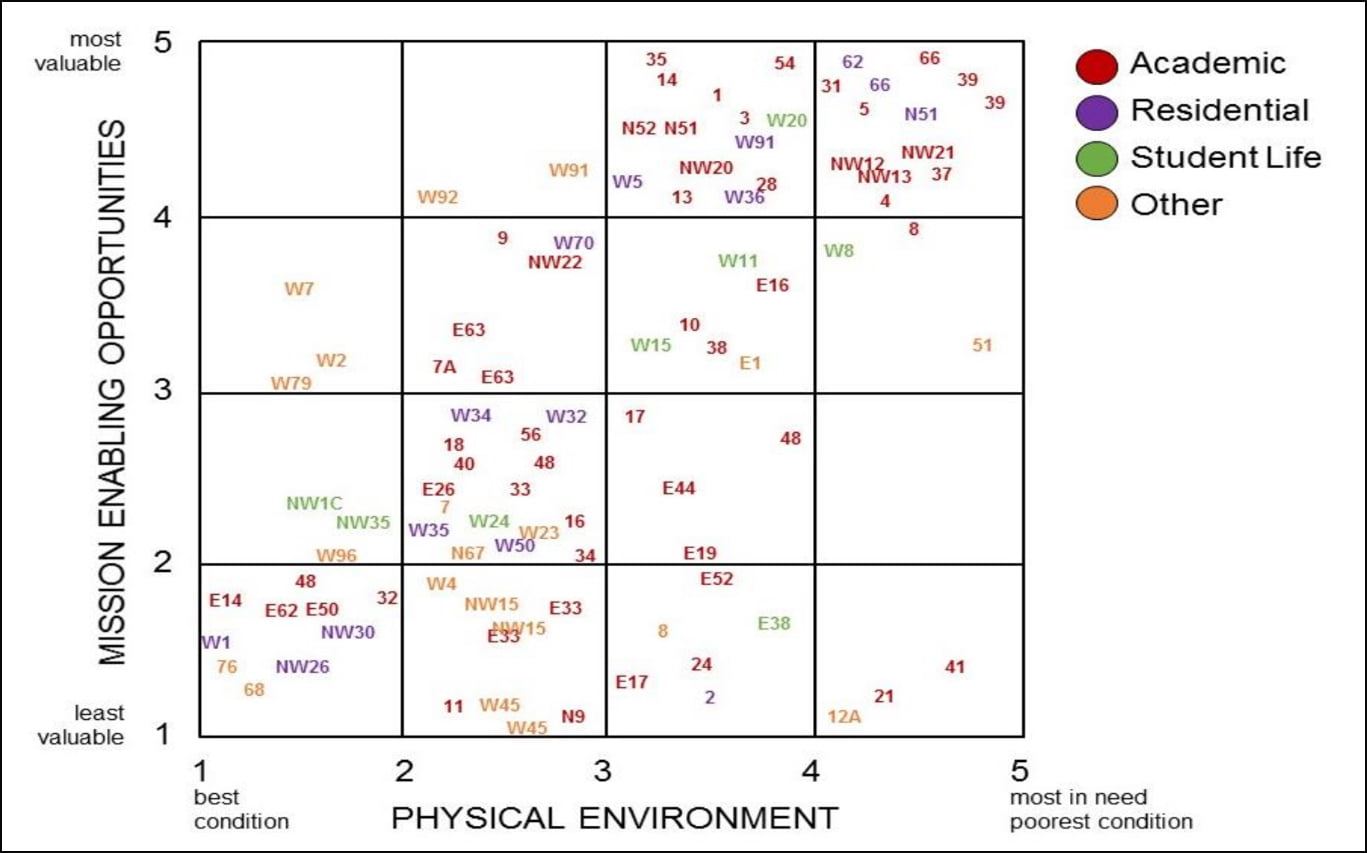Facility Assessments – The Key to Effective Decision Making on Campus
The most expensive items that campuses manage, other than salaries, are facilities. Having up-to-date facility condition data is critical to the upkeep of those assets and management of an institution’s budget. While maintenance management systems help you manage the day-to-day work and provide a general understanding of where you are spending the most, you cannot understand the true condition of assets without more detailed Facility Condition Assessments (FCAs). Institutions that keep their data current see many benefits, including the following:
- Focus on strategic planning & confirmation of mission
- Building consensus for long-term budgeting
- Prioritizing spending
- Encouraging proactive maintenance
- Providing saving & sustainability opportunities
Focus on Strategic Planning & Confirmation of Mission
Undertaking a Facility Condition Assessment forces an institution to focus on its core mission and long-term strategic plan. The most effective assessments factor in both the facility’s value to its mission along with its physical environment in order to prioritize its needs. Here’s one such chart assessing all the buildings on the MIT campus:

Such analysis becomes the foundation for an institution’s strategic planning effort; it builds consensus, aids project planning, and manages risk (by eliminating surprises).
Building consensus for long-term budgeting
A primary goal of facility assessments is to project the longevity of major systems and materials; not just the present deficiencies. In other words, a major roof-top HVAC unit may be functioning well today, but a knowledgeable engineer can identify that it will likely only last another 7 to 10 years. Knowing this allows you to project replacement costs in an orderly, considered fashion. This generally builds consensus for developing appropriate capital improvement budgets, that including revolving funds.
Prioritizing Spending
Assessments are all about helping you make better decisions with your capital improvement budget in the near and long-term, and more accurate data helps you effectively plan for future needs. Every facilities conditions assessment should be presented in a prioritized manner based on agreed-upon criteria, such as: importance to the institution’s mission, life safety/ code compliance, projected longevity, energy efficiency, etc. This information also factors into the decision to undertake a major renovation project (or replacement) in lieu of capital repairs.
Encouraging Proactive Maintenance
There are times when assets deteriorate quicker than expected, and if your assessment data is several years old, you can miss these assets’ investment needs. This leads to more reactive repairs and maintenance, which is more expensive and can affect future years’ plans and budgets. Regular and periodic updating of facility conditions can identify issues earlier, when repairs may be significantly less expensive.
Providing Saving & Sustainability Opportunities
With up-to-date, comprehensive data for your entire campus, you can see where there are opportunities to combine individual capital projects into larger projects, such as replacing roofs across multiple buildings. For example, if you know you are going to have to replace 5 roofs over the next few years, you can combine those into a single project and get a better price from a vendor, based on economies of scale. By combining projects, you can also save time, resources, and impact on your buildings and their occupants. For example, by combining roof and roof-top unit projects, you only have to tear up the roof once, get a crane once, and have only one maintenance period.
Facility assessments can also identify energy saving and sustainability opportunities that might not initially be apparent. For instance, a building’s light fixtures might be functioning adequately and not need repair, but a fairly simple pay-back analysis performed as part of an assessment might reveal that replacement with new LED fixtures and occupancy sensors will be worthwhile.
An up-to-date, professional Facilities Conditions Assessment offers significant return on investment. Having current data on all facilities allows Institutions to optimize time, effort, and budget and to make effective decisions for the future of their campus.
